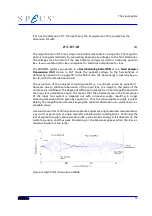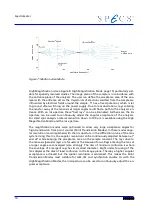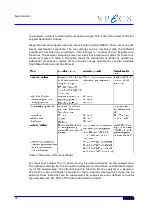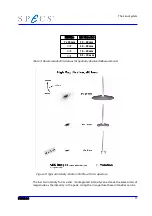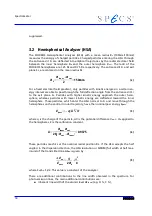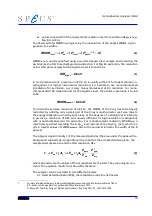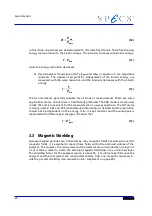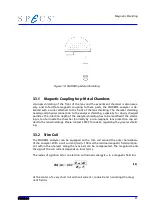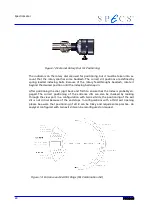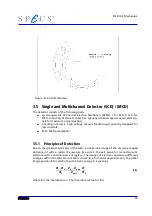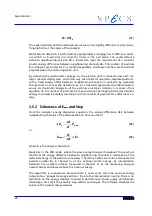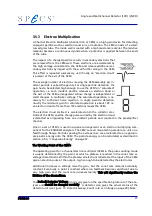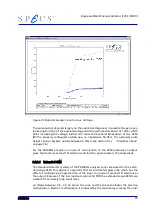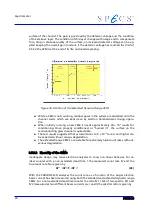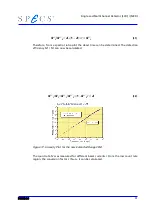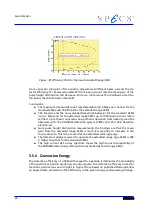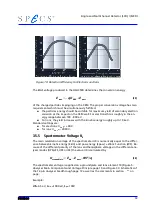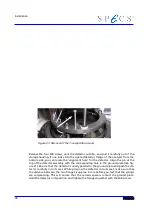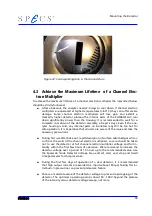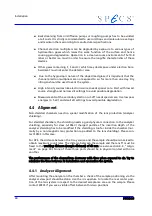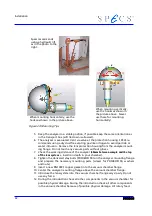
Single and Multichannel Detector (SCD) / (MCD)
3.5.3 Electron Multiplication
A Channel Electron Multiplier (channeltron or CEM) is a high gain device for detecting
energetic particles such as electrons and ions, or radiation. The CEM consists of a small,
curved glass tube. The inside wall is coated with a high resistance material. The resistive
material becomes a continuous dynode when a potential is applied between the ends
of the tube.
The impact of a charged particle results in secondary electrons that
are released from the CEM wall. These electrons are accelerated by
the high voltage connected to the CEM and release additional sec-
ondary electrons by impact with the wall further along in the CEM.
This effect is repeated successively, until finally an “electron cloud”
is present at the exit of the CEM.
The average number of electrons leaving the CEM assembly per in-
cident particle is called the gain G. For single particle detection, the
gain has to be selected high enough to use the CEM‘s in “saturated”
operation, i.e. each incident particle releases an electron cloud at
the exit of the CEM arrangement whose charge is independent of
small changes in multiplier voltage. The saturated operation is ne-
cessary for sufficient noise rejection in single particle detection.
Usually the minimum gain for saturated operation is about 107, i.e.
an electron cloud of more than 107 electrons leaves the CEM.
The electron cloud emitted is accelerated onto the collector elec-
trode of the CEM, and the charge pulse carried by the electron cloud
is detected as originating from one incident particle and counted in the preamplifier
channel.
One or a set of CEM‘s, is used in a special arrangement as an electron multiplying com-
ponent for the PHOIBOS analyzers. The CEM‘s are all mounted in parallel as a unit on a
feedthrough flange. Particles passing the exit aperture are accelerated to an appropri-
ate kinetic energy onto the CEM. The particle energy can be calculated as described in
section 3.5.4, "Conversion Energy" on page 32.
The Working Point of the CEM’s
The operating point for a channel electron multiplier (CEM) in the pulse counting mode
is usually determined by the point at which a plateau is reached in the count rate vs.
voltage characteristic. Within the plateau all electrons collected at the input of the CEM
give an electron pulse at the output, high enough to be detected by the electronics.
Additional increases in voltage raise the gain, but the count rate remains essentially
constant. Eventually, a point is reached where ion feedback becomes significant due to
very high gain, and the count rate increases rapidly. This will significantly reduce the
lifetime of the channeltron.
The Default Detector Voltage is normally given in the specification protocol of the ana-
lyzer and should be changed carefully. A detector scan gives the actual status of the
detector unit (see Figure 15: Detector Sweep, Count rate vs. Voltage on page 29). Note:
27
Summary of Contents for PHOIBOS 100
Page 1: ...PHOIBOS Hemispherical Energy Analyzer Series PHOIBOS 100 PHOIBOS 150 3 1...
Page 6: ...Table of Contents PHOIBOS...
Page 10: ...Introduction 4 PHOIBOS...
Page 13: ...Electrical Connections Figure 2 Connection Scheme PHOIBOS 7...
Page 14: ...Components and Connections Figure 3 Analyzer Housing PHOIBOS100 8 PHOIBOS...
Page 15: ...Electrical Connections Figure 4 Analyzer Housing PHOIBOS150 PHOIBOS 9...
Page 42: ......
Page 51: ...SpecsLab Hardware and Software Installation PHOIBOS 45...
Page 52: ......
Page 62: ......
Page 78: ...Analyzer Checks Figure 33 Schematics of the 12 pin Analyzer Feedthrough 72 PHOIBOS...
Page 80: ......
Page 86: ......
Page 92: ...List of Figures Figure 39 Alignment Pin 84 II PHOIBOS...
Page 93: ...List of Figures PHOIBOS III...
Page 94: ......
Page 96: ......
Page 98: ...Index PHOIBOS...

